The Port of Vancouver USA is dedicated to the health of the economy, our community and the environment. For over 15 years, we have been working on sustainability initiatives through our WE CAN! Sustainability Program. We are always looking for ways to improve and do more.
Under the direction of the Port Commissioners and following a robust stakeholder engagement process, the port finalized a Climate Action Plan as a key strategy in our 2018 Strategic Plan to achieve the port’s environmental goals. This Climate Action Plan provides the Commissioners and port staff with a menu of different actions that the port will take over the coming years to reduce greenhouse gas (GHG) emissions and ultimately achieve carbon neutrality by 2050. Thank you to everyone who provided feedback, shared ideas and supported us through this process.
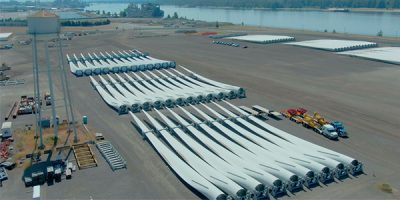

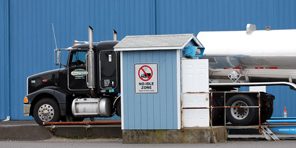


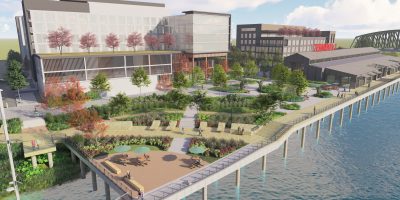
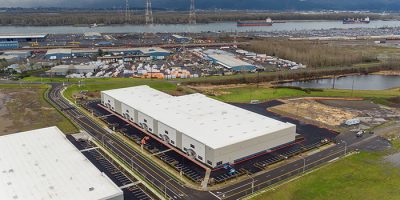
Emissions Reduction Progress
As of 2022, the port has made substantial progress towards its climate action commitments. Since finalizing the Climate Action Plan, the port has implemented several measures to reduce emissions, as summarized below.
Measuring GHG Emissions
There are three standardized ways of measuring GHG emissions:
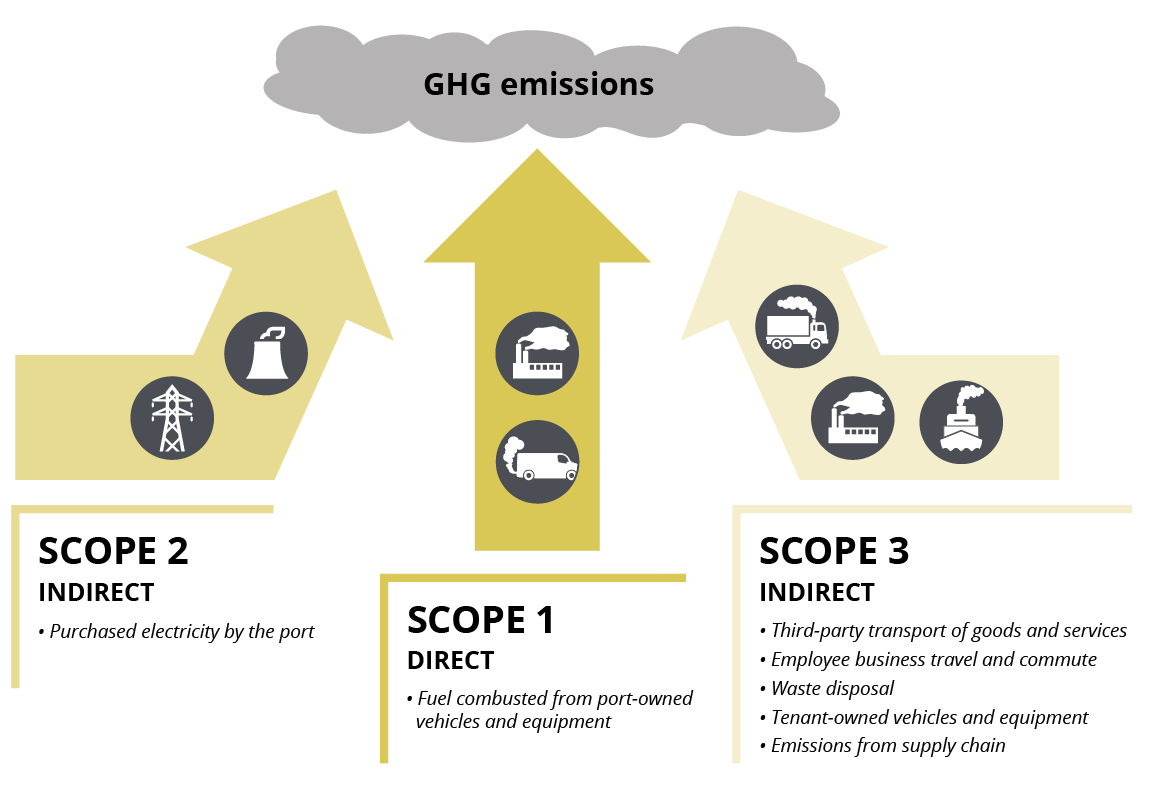
Emissions from Port-owned and Controlled Activities (Scope 1 & 2)
The following table highlights the progress the port has made towards reducing Scope 1 and 2 GHG emissions since finalizing the CAP in 2021.

Scope 3 CAP Progress
Under the CAP, the port is also taking actions to support the reduction of Scope 3 emissions, those that are not a direct result of the port’s own operations, but emissions the port may influence or guide. Reduction of Scope 3 emissions requires extensive coordination with port tenants, vendors, and customers to collect the needed activity data. While not included as a measured numeric goal, Scope 3 emissions reduction actions are an important part of the CAP. The port has continued to make progress towards reducing Scope 3 emissions, including:
To read the Climate Action Plan click here:
Web Version Print Version
En Español
Para leer el Plan de Acción Climática en Español, haga clic aquí
Para leer el Acción Climática Preguntas Frecuentes en Español, haga clic aquí
To learn more about Climate Action Plan progress, read our 2023 Sustainability Report: 2023 Sustainability Report
![]() For questions or feedback regarding Climate Action Plan efforts, please contact:
For questions or feedback regarding Climate Action Plan efforts, please contact:
Della Graham
Environmental Program Manager
Email: info@portvanusa.com
As of 2023, the port has reduced Scope 1 and Scope 2 emissions by 973 MTCO2e per year, which is approximately 60% from our 2005 baseline. This reduction is equivalent to GHG emissions from 232 gasoline-powered passenger vehicles driven for one year. You can learn more by reading our Greenhouse Gas Emissions Inventory Summary for 2023.
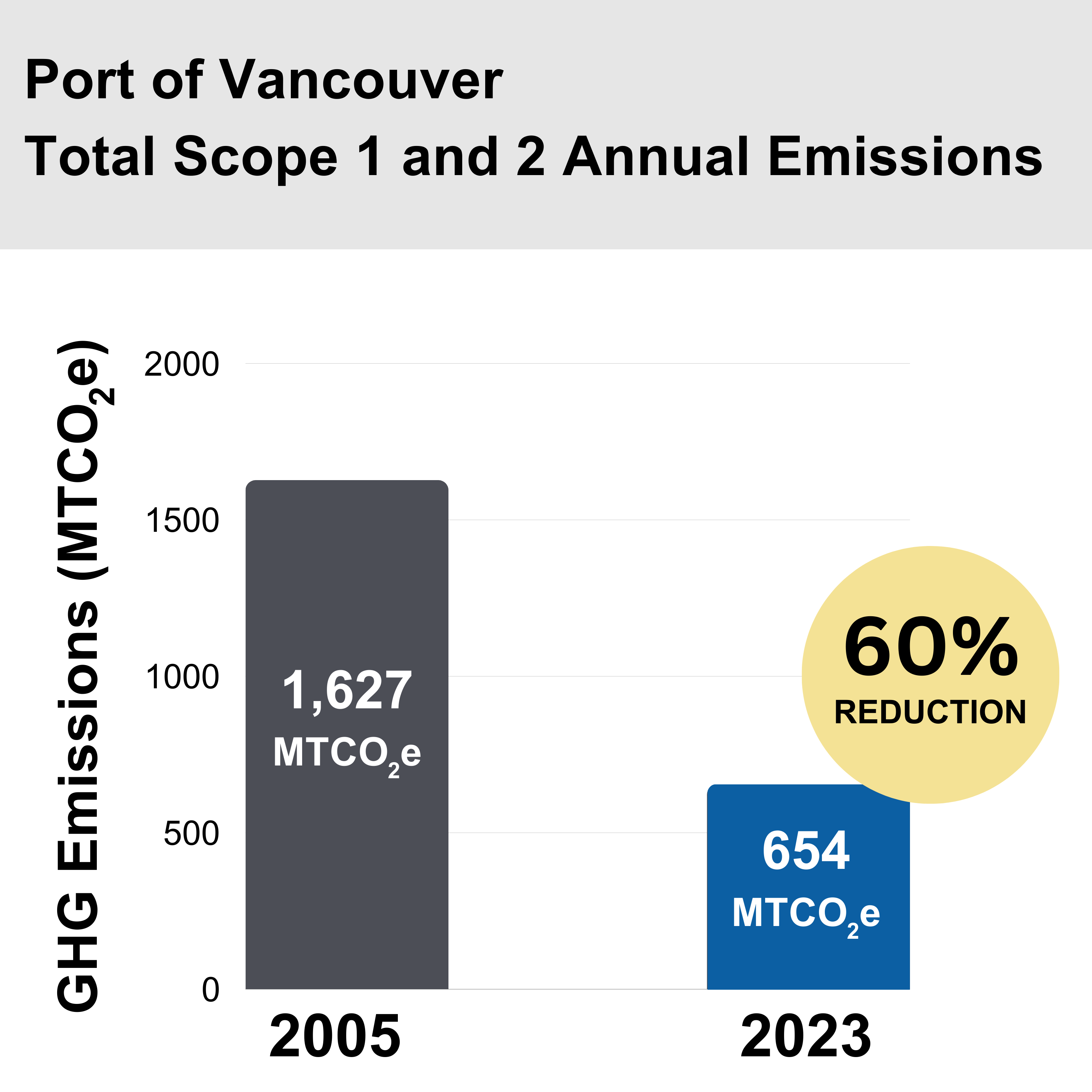 Grant Funding Efforts
Grant Funding EffortsThe port is actively applying for grant funding to advance its Climate Action Plan efforts and reduce GHG emissions.
In 2024, the port was awarded a grant through the Department of Ecology’s Air Quality VW Diesel to Zero Emissions Equipment grant program. This program provides grant funds to replace diesel equipment with all-electric equipment. The port’s $318,273 grant will help replace a 1978 diesel forklift with an all-electric forklift. The port will provide a 20% match and scrap the old forklift.
Also in 2024, the port was awarded a $180,000 grant through the Washington State Department of Commerce’s Electric Vehicle Charging Grant Program. Through this grant, the port will install nine level 2 chargers on the port terminals.
A pending grant request was submitted to the EPA’s Clean Ports Zero Emissions Technology Deployment Grant Program in May 2024. The port’s $22.5 Million request is to fund the purchase of two electric mobile harbor cranes, the infrastructure to power the e-cranes and shore power installation at the Terminal 1 dock for cruise vessels. If awarded, the port will contribute a $2.5M match for the federal grant.
The 2021 CAP established the following reduction targets for port Scope 1 and Scope 2 sources of GHG emissions:
In addition, the CAP includes actions the port will take to reduce Scope 3 emissions from its tenants’ operations and from other sources occurring on or around the port that the port does not own and directly control.
3103 NW Lower River Road, Vancouver, WA 98660
PHONE360-693-3611 FAX360-735-1565 EMAIL info@portvanusa.com
SCROLL
